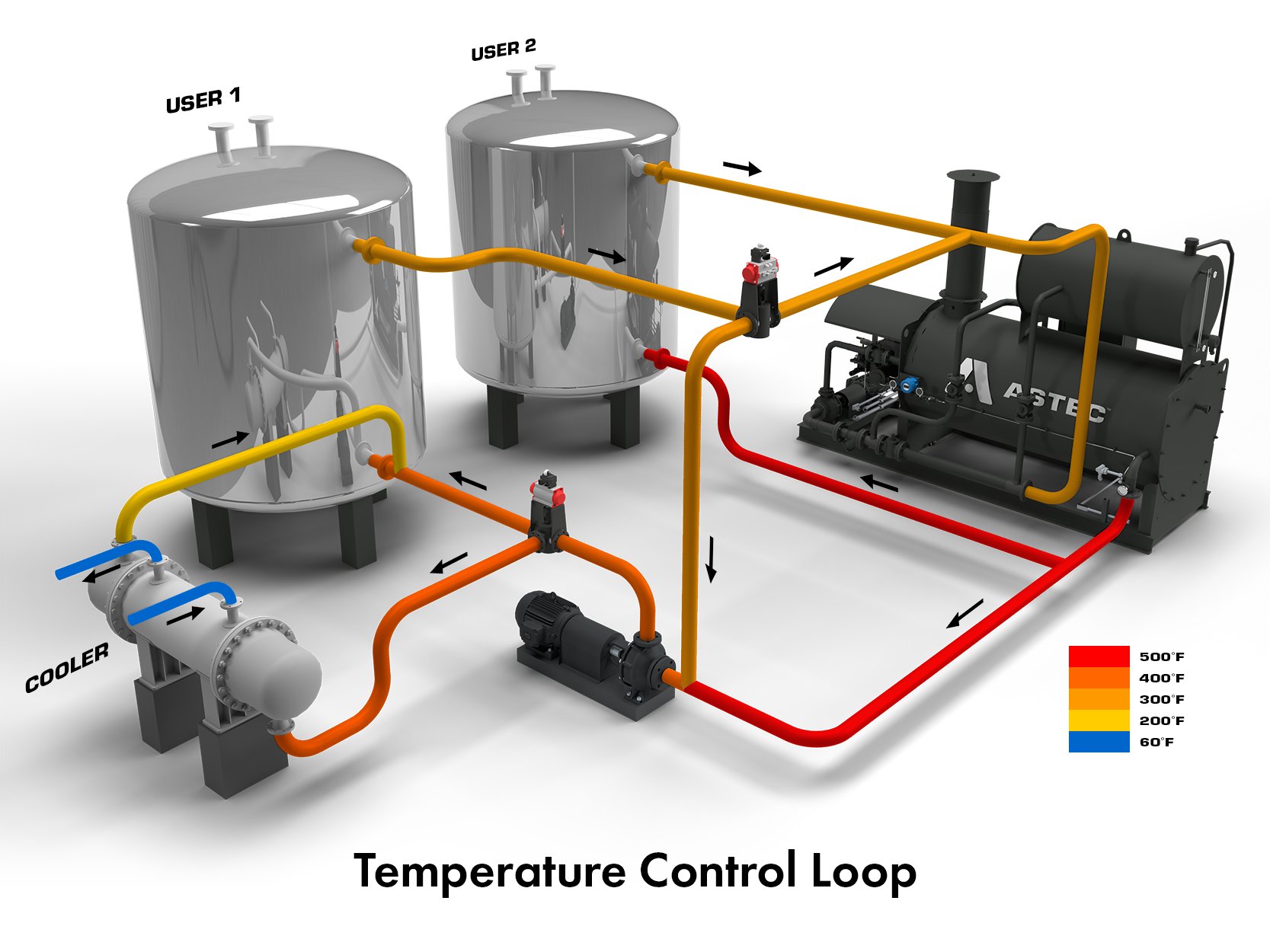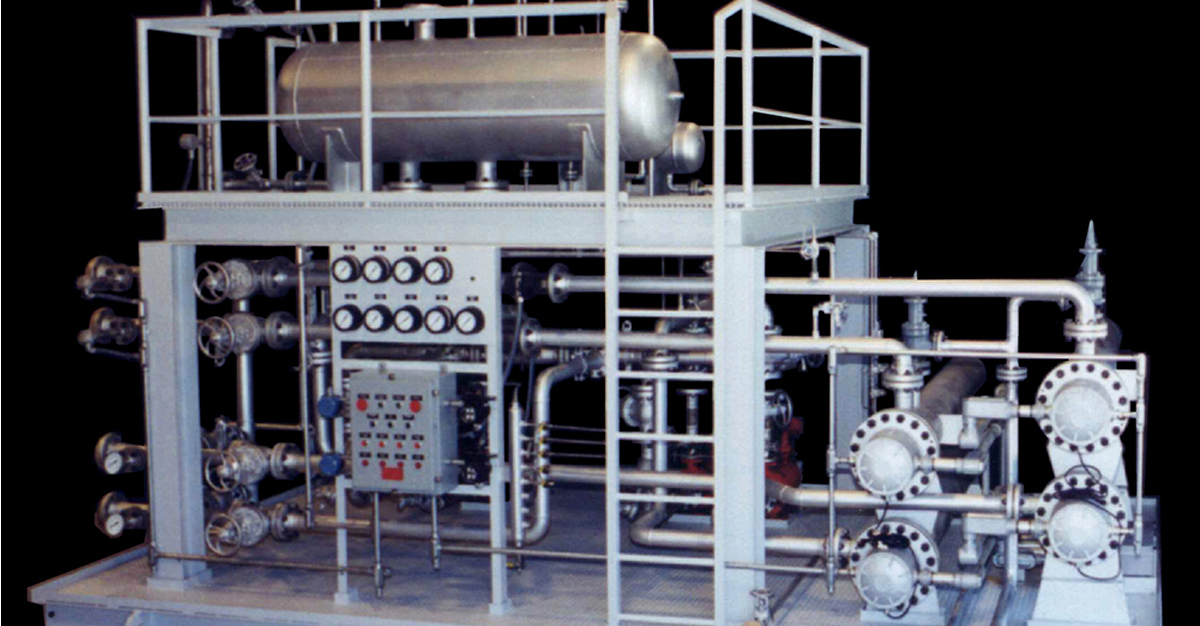The Duty of Heat Transfer Solutions in Sustainable Energy Solutions for the Future
Heat transfer systems are necessary in the quest for lasting energy options. They maximize thermal power monitoring, boosting the effectiveness of eco-friendly modern technologies. By utilizing devices like convection, radiation, and transmission, these systems reduce power losses. Their duty in solar thermal and geothermal applications is particularly substantial. As advancements emerge, the capacity for more advancements raises vital concerns regarding future energy methods. What developments will shape the landscape of lasting energy?
Comprehending Heat Transfer Equipments

The Importance of Thermal Energy Administration
Effective thermal power monitoring is important for optimizing power efficiency and lessening waste in numerous systems. By controling temperature level and maximizing Heat transfer processes, companies can considerably minimize power consumption and functional costs. Reliable monitoring entails the implementation of sophisticated innovations and methods that check and regulate thermal conditions within systems, guaranteeing that power resources are utilized successfully. Additionally, proper thermal energy administration contributes to reducing greenhouse gas exhausts, straightening with international sustainability goals. It also boosts system dependability and performance, resulting in improved product top quality and longer equipment life-span. Inevitably, prioritizing thermal energy monitoring is an essential action towards producing more sustainable power options and cultivating a responsible approach to energy usage in industrial and household contexts.
Applications of Heat Transfer in Renewable Resource
While numerous renewable resource sources assure sustainability, the effective application of Heat transfer plays an essential function in their effectiveness. In wind energy systems, Heat transfer is made use of for wind turbine component air conditioning, boosting efficiency and longevity. Geothermal power counts on effective Heat exchange between the planet's subsurface and the liquid flowing in the system, maximizing energy extraction. Biomass power procedures also benefit from Heat transfer, as it assists in converting natural products right into useful fuel with pyrolysis and gasification. Furthermore, in hydropower, preserving excellent temperatures in tanks can enhance energy outcome. Each of these applications shows the vital significance of Heat transfer systems in boosting renewable resource modern technologies, eventually adding to an extra sustainable power future.
Enhancing Solar Thermal Power Efficiency
As solar thermal power systems continue to advance, improving their performance has come to be necessary for taking full advantage of power output. Advancements in Heat transfer innovations, such as boosted thermal storage space materials and cutting-edge Heat exchangers, play a substantial role in improving performance. By using advanced materials that have superior thermal conductivity, systems can move and capture Heat extra successfully. In addition, integrating monitoring systems that comply with the sun's course assurances that enthusiasts obtain perfect solar direct exposure throughout the day. Using nanotechnology in solar absorbers can additionally increase power absorption prices. Moreover, integrating automatic control systems assists take care of and manage temperature levels power circulation effectively, resulting in minimized losses and boosted total system performance. These improvements pave the method for more sustainable solar thermal energy options in the future.
Geothermal Home Heating: A Lasting Solution
Geothermal home heating provides a sensible alternative for lasting energy, using considerable environmental benefits with minimized greenhouse gas discharges. Its efficiency and cost-effectiveness make it an attractive choice to typical furnace. Nevertheless, difficulties associated with execution has to be addressed to optimize its potential effect.
Ecological Benefits of Geothermal
Although standard home heating techniques add substantially to greenhouse gas emissions, geothermal home heating offers a compelling option that lessens environmental impact. By taking advantage of the Earth's inner Heat, geothermal systems use a renewable resource source, considerably reducing dependence on nonrenewable fuel sources. This technique creates very little carbon emissions, making it a cleaner option for business and property home heating. Additionally, geothermal systems advertise power effectiveness, as they need less energy compared to standard home heating systems. DVS Heat Transfer Systems. The utilization of geothermal energy additionally helps in minimizing air pollution, boosting regional air quality and public health. As a lasting option, geothermal heating supports environment adjustment reduction efforts, positioning itself as an important part in the shift in the direction of a greener future
Effectiveness and Cost-Effectiveness
How does geothermal heating measure up in terms of efficiency and cost-effectiveness contrasted to conventional heating unit? Geothermal home heating imp source shows premium effectiveness, commonly attaining a coefficient of efficiency (COP) of 3 to 5, suggesting it produces three to five units of Heat for every device of electrical energy taken in. This performance equates into lower operating prices, especially in regions with stable geothermal sources. Preliminary installation costs can be more than traditional systems; nonetheless, lasting financial savings on power bills and lowered maintenance expenditures can offset these in advance financial investments. Additionally, lots of governments incentivize geothermal systems via refunds and tax obligation credit scores, enhancing their cost-effectiveness. Overall, geothermal home heating becomes a economically feasible and lasting alternative to even more conventional heating services.
Execution Challenges and Solutions
Various obstacles can restrain the widespread execution of geothermal heater, despite their clear benefits as a sustainable energy remedy. High first setup costs often hinder home owners and financiers, making financing a substantial obstacle. Additionally, the geographical limitations of ideal geothermal sites limit accessibility in certain regions. Neighborhood policies and permitting procedures can also make complex project growth, resulting in hold-ups. Additionally, public recognition and understanding of geothermal systems stay low, impeding acceptance. To resolve these challenges, targeted education and learning projects can improve public expertise, while federal government motivations might relieve monetary burdens. Teaming up with neighborhood authorities to improve guidelines might assist in smoother job approvals, inevitably advertising the fostering of geothermal heating as a viable, lasting power choice.
Advancements in Heat Transfer Technologies
Developments in Heat transfer innovations play an important function in improving energy effectiveness and sustainability. Advanced Heat exchangers and phase modification products go to the center of these advancements, using considerable renovations in thermal monitoring. These innovations not just optimize power use but also contribute to decreasing environmental influence in numerous applications.
Advanced Heat Exchangers
Advanced Heat exchangers play a necessary duty in improving energy effectiveness across numerous applications in sustainable power remedies. These devices promote the transfer of Heat in between 2 or even more fluids, substantially reducing energy intake in processes such as industrial home heating, air conditioning, and power generation. Developments in materials and layout, such as using nanofluids and compact configurations, have actually caused enhanced thermal performance and minimized size demands. Additionally, advancements in digital surveillance and control systems enable for optimized procedure, more increasing performance. By decreasing waste Heat and maximizing energy recuperation, advanced Heat exchangers add to decrease carbon footprints and support the change towards eco-friendly innovations. Their continued growth is important for accomplishing worldwide power sustainability objectives.
Phase Change Materials
The integration of stage change materials (PCMs) right into Heat transfer modern technologies stands for try this site a significant advancement in energy monitoring and effectiveness. PCMs soak up and launch thermal power during their stage changes, allowing reliable temperature policy in structure materials and power systems. By keeping excess Heat throughout optimal periods and releasing it when need boosts, PCMs contribute to pack changing and power preservation - DVS Heat Transfer Systems. This capacity improves the efficiency of eco-friendly energy systems, especially in solar thermal applications. Additionally, PCMs can enhance the thermal convenience of indoor atmospheres, lowering dependence on conventional home heating and cooling approaches. As technologies in PCM solutions remain to emerge, their duty in lasting energy options is poised to grow, supplying appealing avenues for future research study and application

Future Leads for Heat Transfer in Lasting Power
As the demand for sustainable energy solutions remains to increase, the function of Heat transfer systems is ending up being progressively critical in shaping future technologies. Innovations in layouts and materials are expected to boost efficiency in Heat transfer, decreasing energy losses in different applications. The combination of sophisticated thermal storage space systems, such as phase modification products and thermochemical storage, will allow much better monitoring of power sources. Study right into nanofluids and biomimetic Heat exchangers may better maximize thermal performance. Moreover, the fostering of smart innovations will certainly permit real-time surveillance and adaptive control of Heat transfer processes. These improvements are poised to considerably add to the total efficiency and sustainability of energy systems, leading the way for a much more energy-efficient future.
Often Asked Questions
How Can People Carry Out Heat Transfer Systems in the house?

People can execute Heat transfer systems in the house by setting up energy-efficient appliances, utilizing radiant heat, and optimizing insulation. These measures improve energy performance, decrease prices, and promote lasting practices in household atmospheres.

What Are the Expenses Connected With Installing Heat Transfer Solutions?
The prices related to mounting Heat transfer systems vary widely, usually incorporating equipment, installment labor, and upkeep. Aspects such as system kind, home size, and neighborhood regulations significantly influence the overall expense entailed.
Are There Federal Government Incentives for Heat Transfer System Installations?
Federal government incentives for Heat transfer system setups vary by area and can include tax obligation rebates, credits, and gives. These monetary advantages intend to motivate adoption, eventually promoting energy performance and lowering ecological influence within communities.
Exactly How Do Heat Transfer Systems Influence Energy Costs?
Heat transfer systems especially influence energy costs by optimizing power effectiveness. By boosting the transfer of Heat, these systems minimize energy intake, resulting in reduced utility expenses and developing a more sustainable approach to energy administration.
What Maintenance Is Required for Heat Transfer Systems?
Maintenance for Heat transfer systems consists of routine inspections, cleaning of elements, examining fluid levels, making sure proper insulation, and replacing used parts. These jobs aid keep efficiency, avoid breakdowns, and extend the system's operational life expectancy.
These systems facilitate the movement of thermal energy from one medium to another, allowing the transfer of Heat for energy, heating, or cooling generation purposes. Geothermal energy relies on effective Heat exchange between the planet's subsurface and the fluid circulating in the system, maximizing power extraction. In addition, geothermal systems promote energy efficiency, as they require much less energy contrasted to conventional home heating systems. Advanced Heat exchangers play a crucial function in improving power efficiency across numerous applications in sustainable power solutions. Heat transfer systems notably my explanation affect power bills by maximizing power performance.